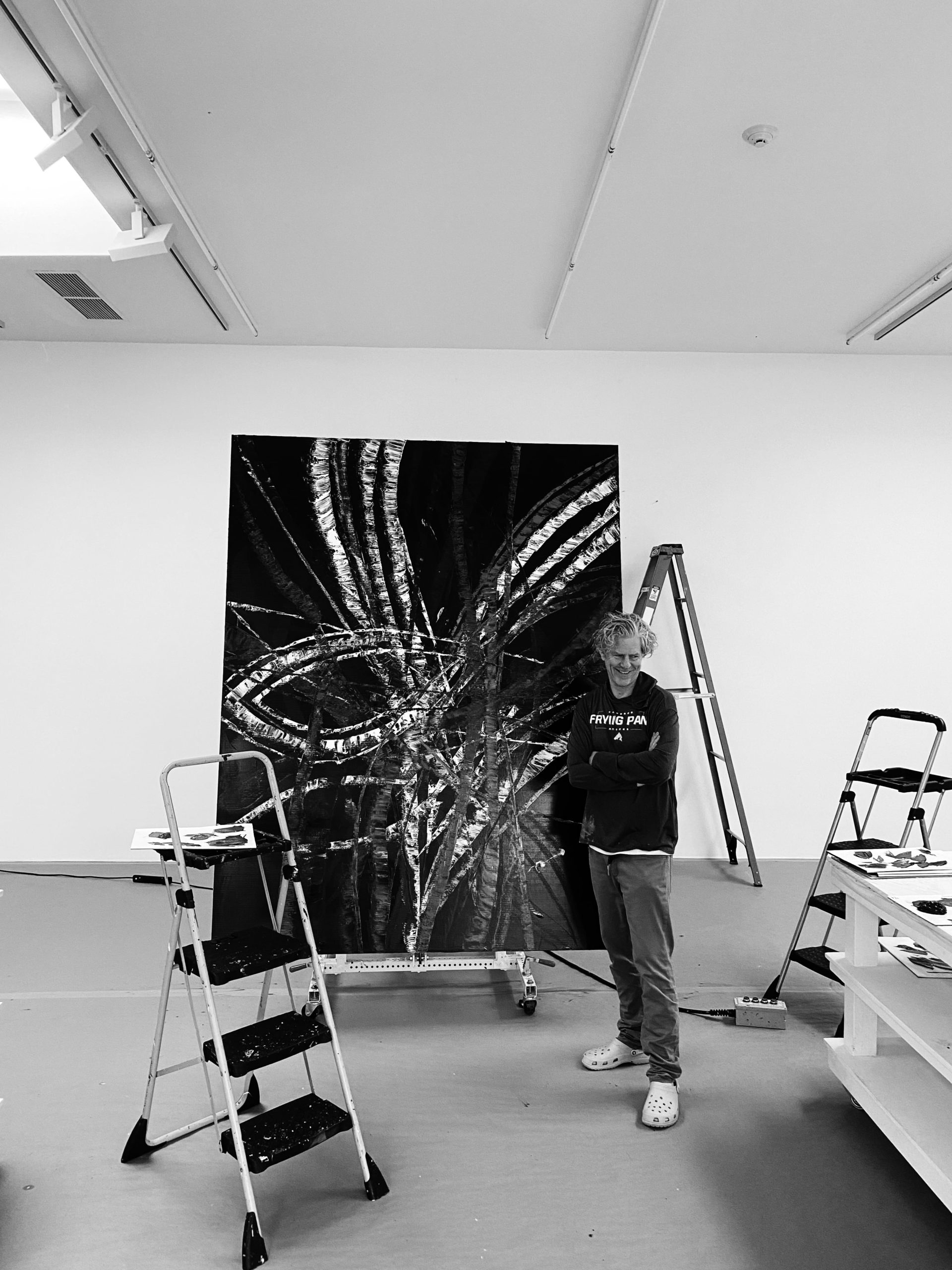Currently on view at Gagosian’s Grosvenor Hill location in London is Mark Grotjahn’s “Backcountry.” The exhibition of new paintings by the Los Angeles-based artist reference landscape, specifically the natural expanse surrounding his property in Colorado. The new series stems from a shift in the Grotjahn’s paintings away from anthropomorphic and animal-like representations in series like “Masks,” “Faces,” or “Butterflies.”
That switch began with a trip to Casa Malaparte a few years ago, an architectural marvel set against (featured in Jean-Luc Goddard’s 1961 film Contempt) a rugged, seaside backdrop of Capri. While exploring this new way of working with paint, he’s also been spending his time thinking about, and sometimes visiting, how various artists have engaged with architecture—names like James Turrell, Donald Judd, and Henri Matisse.
Ahead of the opening of “Backcountry” in London (up through, November 5, 2022), Whitewall spoke with the artist.
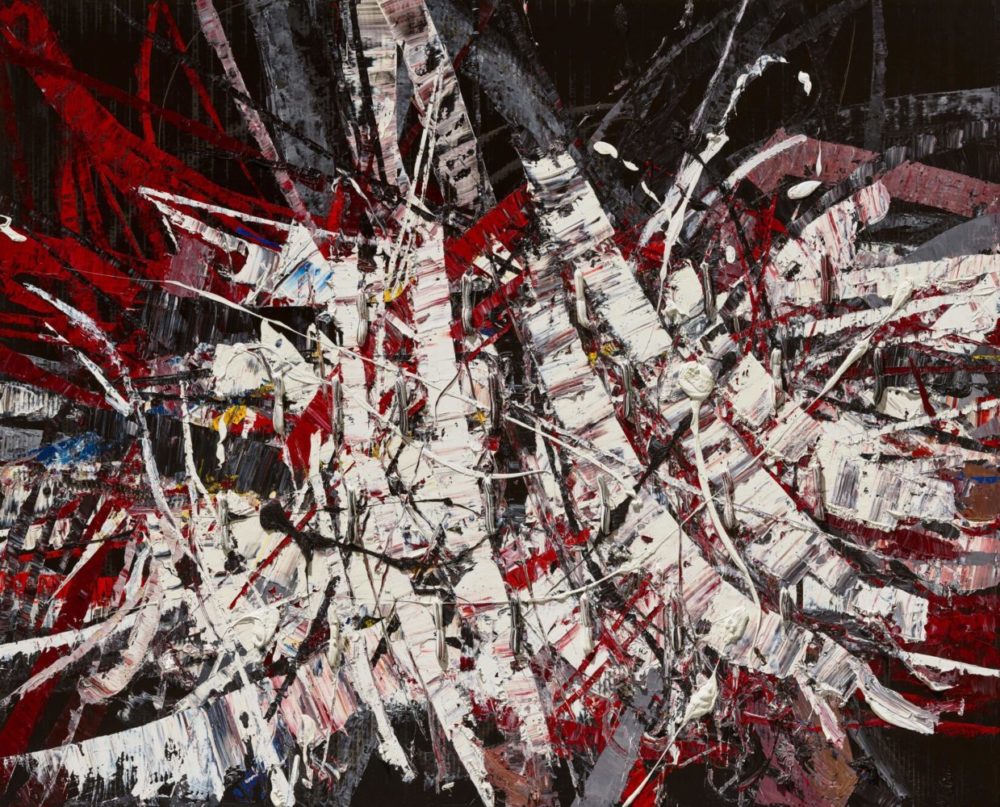
Mark Grotjahn, “Untitled (Backcountry Capri 54.79),” 2022, oil on cardboard mounted on linen, 55 1/2 x 68 3/8 inches; © Mark Grotjahn, photo by Douglas M. Parker Studio, courtesy of Gagoisan.
WHITEWALL: Will you be in London for the opening of “Backcountry”?
MARK GROTJAHN: Yes, and then I go to Venice for a little work, and then I go to Nice for some work—but my work is looking at really interesting, cool spaces. In Nice, I’m going to see the Matisse chapel, which I’ve always wanted to see. I’m really interested in seeing how different artists have used architecture.
WW: That’s interesting because the work in “Backcountry” extends from an earlier body of work, “Capri,” inspired by a visit to another architectural site—Casa Malaparte in Capri. Has architecture always been of interest to you, or is it something you’ve dived into more recently?
MG: It’s taken a different meaning recently, but I’ve been interested in people like Donald Judd, and what he did with Spring Street and Marfa. I’ve been interested in artists being able to buy buildings so that landlords can’t take them away. Getting space and time is super important for an artist. Thinking about Turrell working in Venice [California], taking some abandoned hotels and transforming them into light spaces and then moving on to his crater.
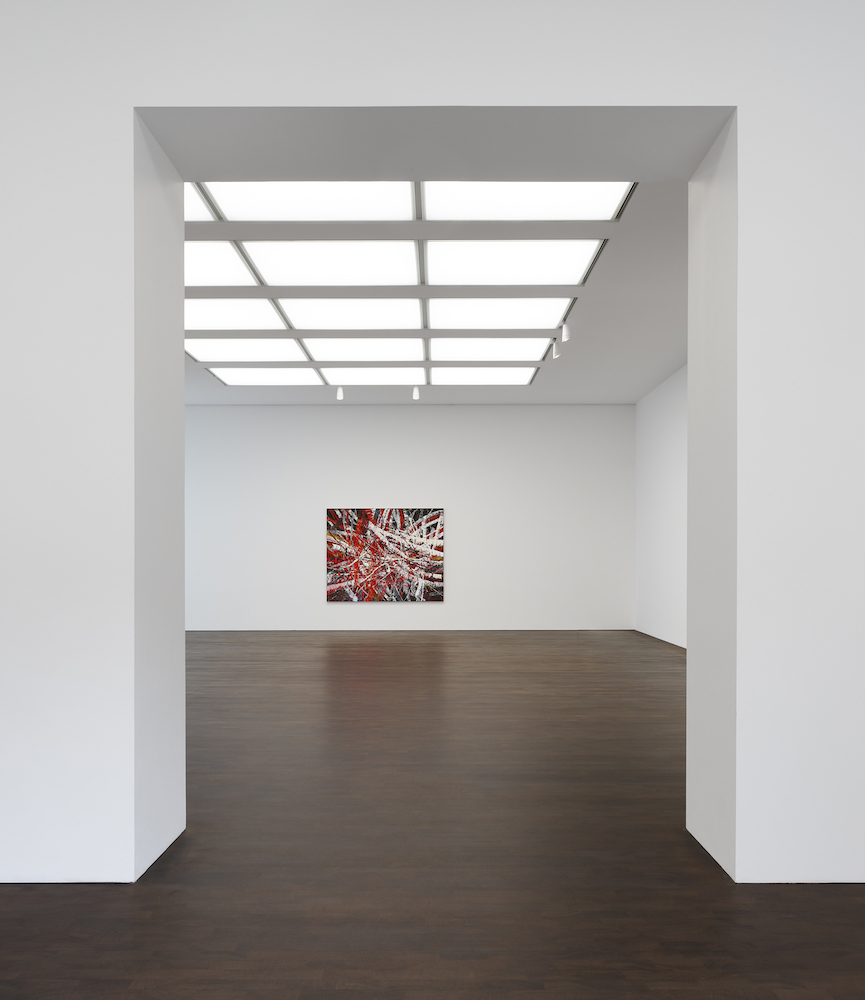
Installation view of “Mark Grotjahn: Backcountry,” © Mark Grotjahn, photo by Prudence Cuming Associates Ltd, courtesy of Gagosian.
WW: Are you feeling inspired to do something like that?
MG: I am in the process of doing that. It’s been a really difficult six years. But I am working with some Chilean architects, Pezo von Ellrichshausen, we’ve made some buildings and we’re going to hopefully start building in 11 months. It’s six years coming and they’re going to be spaces to experience art.
WW: Wow! Is it going to be in LA?
MG: No. in Colorado. The “Backcountry” comes out of being there on the land, hiking up the mountains and skiing down them, which is something I had always dreamed of doing and got to do for six weeks straight during the pandemic. I had cross-country skis so I could go out on my land. I’ve been skiing my whole life but skiing cross-country was new for me.
WW: How did you get into that?
MG: I went down to the ski shop and said, “I need something so I can get around my property.” I just like being in the peace. They gave me these tour skis, which have scales on them so you can hike up small little hills. Once you get to the top you can turn the binding around and snap in, and ski down just like normal downhill. That completely opened up the possibility for me to start hiking up above the property.
WW: That’s incredible. Going back a little bit, to your “Capri” series, how did you find yourself making a body of work around Casa Malaparte?
MG: That was a show that Larry [Gagosian] offered me, and I couldn’t imagine saying no, because it was my favorite piece of domestic architecture. I’d never been, but that seemed like that was a good enough, cool enough, weird enough thing, that I felt like I could put my head down and try something new. And that’s what I did.
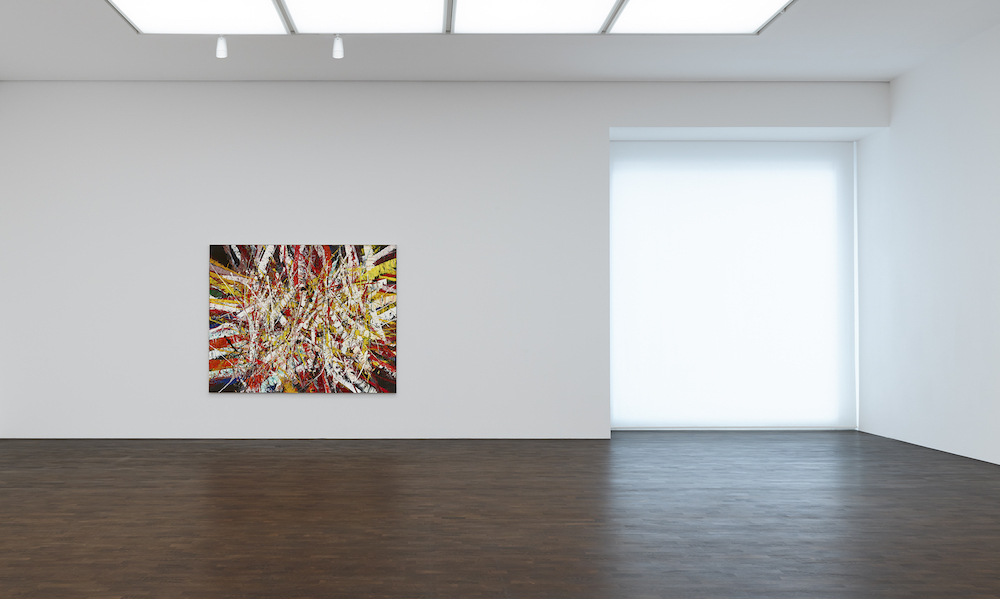
Installation view of “Mark Grotjahn: Backcountry,” © Mark Grotjahn, photo by Prudence Cuming Associates Ltd, courtesy of Gagosian.
WW: What was it like to go there? It’s one thing to have this architecture live in your mind from the iconic Jean-Luc Godard movie, Contempt, but then to actually see it in person…
MG: The whole experience was pretty incredible. I was with my then-wife and my two young kids. It was so spectacular with the cliffs—taking a boat, walking up the rocks with ropes, and the severity of the place with the severity of the choices that he made with his architect.
It is rugged, elegant, and straightforward. It was somehow even better than I anticipated. I felt really lucky to be there. I had no idea there was a lower level, and the bedrooms there were painted different colors, so I got to hang a yellow painting on the yellow walls. We would spend time moving the paintings around and then swimming and having lunch. It was very luxurious. I did not take it for granted.
WW: How did seeing it there, experiencing it there, then influence the paintings you made? You’ve said that at the time, you were looking for a way to move away from what you’d been doing.
MG: I was moving away from “Faces” and so the show and Capri changed that. I had the start of a new language. From there, I wanted to work larger. It was one of the first times that it took over a year to be able to figure out how to do it on a larger scale. I blew up some of the smaller ones and I had them printed on vinyl to see how it would hold a wall. It did hold the wall. But when I started painting them larger, I either didn’t have the confidence, or the know-how, or the faith. It’s supposed to have a somewhat naturalistic experience—like it was meant to be. It took me a while to get my bearings on a larger size before I felt like I was doing that.
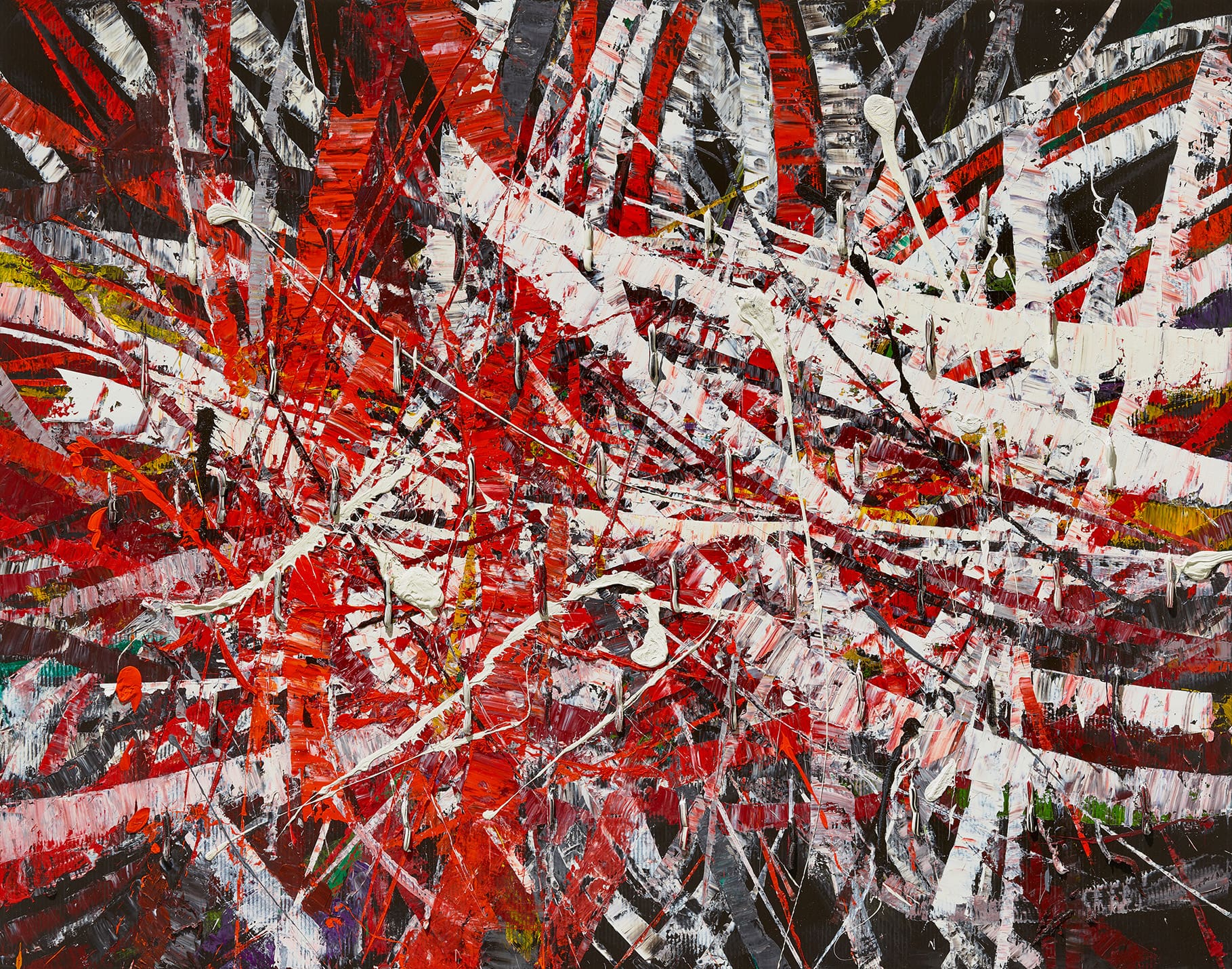
Mark Grotjahn, “Untitled (Backcountry Capri 54.74),” 2021, oil on cardboard mounted on linen, 74 3/8 x 94 3/8 inches; © Mark Grotjahn, photo by Douglas M. Parker Studio, courtesy of Gagoisan.
WW: Given the landscape, or you mentioned even the colors in the bedrooms, were you thinking about color differently?
MG: The first show in New York, I was working primarily with black and white. I had black backgrounds and I had white backgrounds, and then I ended up bringing color at the last minute. I was there in Capri, looking at the wild cypress, untrimmed, with some of the paintings in the background. I think my work with the faces, even with the butterfly, they don’t come out of nature, but you can see the way that things pattern out—even the way that the plant patterns out and how the leaves come off of the stems and the eyes come out of the center in the faces. I did see that. But I started to think about, what do I want to see on a wall? What would that feel like? What direction do I want the painting to take?
WW: How did that work then lead to “Backcountry”?
MG: I was backcountry skiing, and I got a call from Blum & Poe while I was there. At the time I was in such good shape because I was skiing every day. I was getting so much exercise and my mind felt so clear. I felt very confident in my ability to do things. I’m also there not making art. It’s one thing to think about how easy it is to make a painting when you’re not making a painting. I agreed to do a show in ten months. I knew that they were going to be white because I was in white. I knew that the feel that I wanted to have was one of expanse and potential.
I was taking white very directly from the snow. I was doing a lot of mapping when I was up there—satellite mapping. I’m not particularly good with computers, or with technology, but it’s really important that you have it there. You want to get the angles of the mountains, but also you can see where you are in relation to the map. I wanted to know how to do it. I started looking at the maps and photographing them. That became a starting point.
It started in the actual landscape. Then I would paint over it. I would obliterate it. Then I would also do some drawings, thinking about the creek, the trees around it, where it was, and how I skied it. In some of the early “Capris,” you can actually see some very rudimentary trees in there.
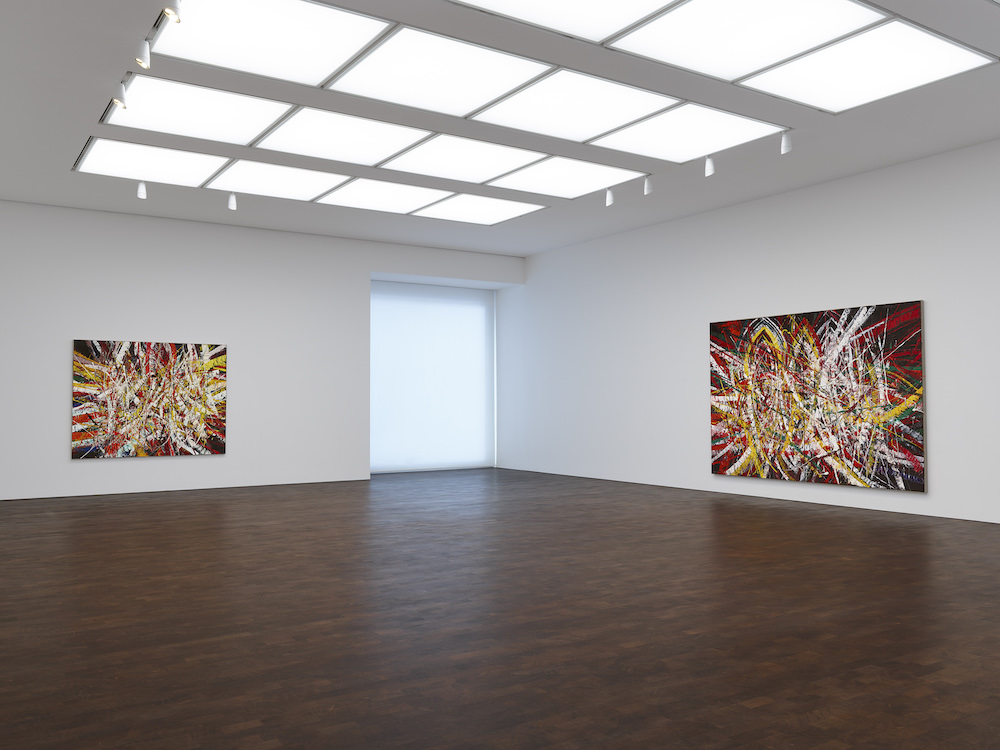
Installation view of “Mark Grotjahn: Backcountry,” © Mark Grotjahn, photo by Prudence Cuming Associates Ltd, courtesy of Gagosian.
WW: And what will we see from these new “Backcountry” paintings in London?
MG: It’s from the backcountry but they’re black backgrounds. I wanted to see these paintings on black. I didn’t want to do any more white paintings. I wanted it to feel heavier and more serious. Not that black is more serious than white, but sometimes it feels immediately more contemplative and grounded. I started doing diptychs and experimenting with that. They’re actually two panels of cardboard that are split on a larger canvas and mounted onto linen. They in some ways referenced some earlier work, like the “Butterfly” paintings, where there is a middle line that separates the two sides. I started painting them and it was white on black. It started making me think about orcas.
WW: You mentioned thinking about how artists engage with architecture. Do you feel like your thoughts on that, what you’re doing in Colorado, has impacted at all what you’re doing in the studio?
MG: Yes. There are advantages to certain spaces—if you think about the Upper East Side, or some of the spaces in London, some of the domestic spaces, old MoMA, the hotels in Europe that have been turned into museums or exhibition spaces. I’m going to have that in Colorado. That’s also true with Donald Judd and Georgia O’Keefe. I do think about it a lot.
Fortunately, this space really takes advantage of windows, and I’ve always found it nice to be in a space that has windows to the outside. It’s never been about competing with the outside. It is a part of the thing. I don’t want to feel trapped psychologically or physically in a space.
WW: Does your studio in LA have windows?
MG: Yes.
WW: Can you make work when you’re in Colorado now?
MG: I like to journal a little bit and sometimes do a little drawing. But, no, it’s really nice to go there and not make work. Ultimately, I will have a studio there and I will work there and that will be nice. I’m looking forward to that. Right now, I like the time off. I have to be very diligent about taking time off, because I’ve got a lot of ideas and a lot of work to do. One of the advantages to getting older is that my mind has maybe slowed down just a little bit. So, I’m able to think about, what it is that I want? How do I see things going forward? Not all of those solutions are in the studio. It was nice when it was just the studio. That was a different time. Now it’s more expansive and it gives me more of a chance for contentment and contemplation.
I like getting out of the studio and just experiencing life on life’s terms. It’s really exciting to think about these spaces. It’s been really difficult too because it’s not just me, it’s architects. It’s city. It’s builders. It’s money. The goal was to get enough money so that I could have the space I wanted and the time I wanted. Now I have the capital to see these bigger things through. It’s complicated. There are a lot of moving parts. There are people with badges telling me I can’t do something and I don’t like that. It’s also turned out to be kind of interesting because it actually sets up some parameters. What can you do inside of that? I’ve always set up those parameters in my paintings. [deleted a lot of lines here] There can be a certain kind of freedom there.
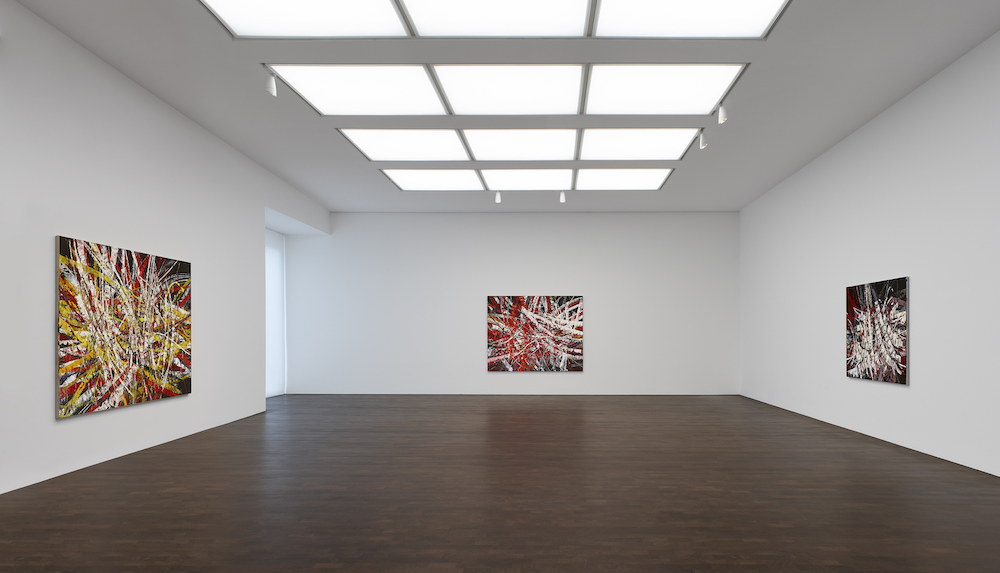
Installation view of “Mark Grotjahn: Backcountry,” © Mark Grotjahn, photo by Prudence Cuming Associates Ltd, courtesy of Gagosian.
WW: There can be a creativity to that kind of problem-solving.
MG: It’s interesting. However, Colorado has mostly been torture, but I’m kind of in a good way with it now. It’s fun to be part of a team. As an artist, I always wanted to be in a band. Four people, working really tight. You kind of get that earlier on when you’re an artist—all you have are your friends and they’re artists and care so much about their work, and they care about your work. They’re into it and they’re into ideas. But it’s still, for a lot of us, a very solitary thing. It’s nice to bring in other ideas and to bring in people who have come up with their own solutions for your ideas.
WW: And eventually other people will be experiencing this, on a whole different level from your exhibitions.
MG: Yes. Come up. Have a burger. Ski from one place to another. Look at some art.



